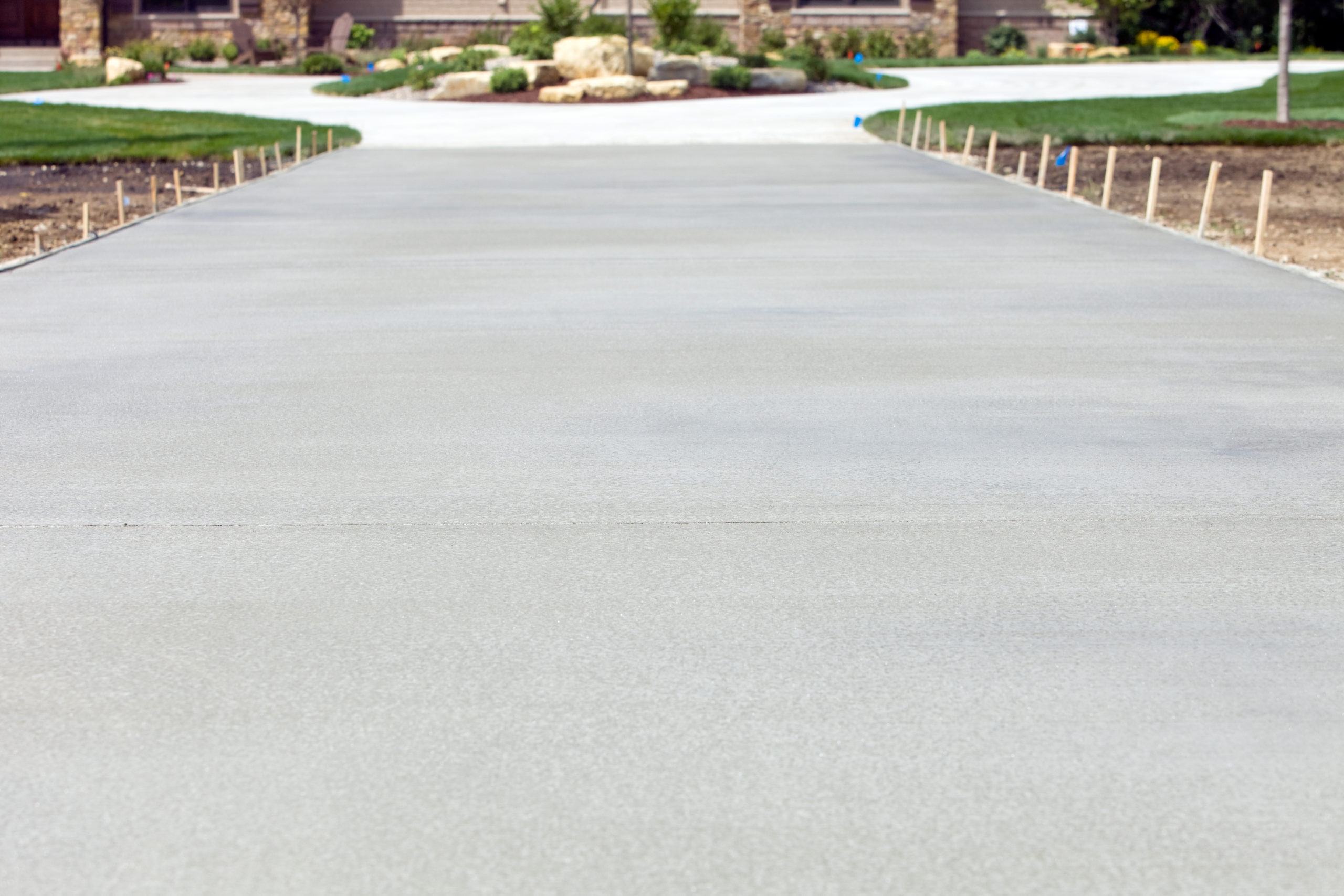When planning a concrete project, you might be wondering how long to wait before the area is ready for use. Whether pouring a new patio, replacing a crumbling driveway or adding hardscapes to your yard, it’s important to understand how long it takes for concrete to dry. If not waiting long enough before use, you run the risk of ruining the pour and having to re-do your entire project. To avoid this issue, it is best to err on the side of caution.
In general, concrete begins drying just as the dry mix is combined with water. In other words, act quickly to get your concrete poured and finished before it hardens. But just because the concrete is hard doesn’t mean that it is ready for use. It often takes longer than you might expect. In order to plan for your project, read on to discover the many factors that can impact the drying time of concrete.
Weather
The time of year and weather conditions during your pour concrete can either speed up or slow down the drying process. Dry, hot weather makes it dry much faster, while cold or humid weather can slow it down. Because of this, most professionals recommend pouring from early spring until fall, unless you live in a climate with temperate weather year-round.
When you want a faster drying time, it may seem beneficial to pour during hot weather; however, this can add another challenge. The hot temperatures will make the concrete dry faster and you will have less time to work with it. But there are a few things that will give you a little extra time to pour, spread and finish your concrete:
- Store concrete bags in the coolest area possible, like in the shade or a garage
- Use cold water to mix with the dry cement
- Pour during early morning hours before the heat of the day
- Wet the ground on which you’re pouring the concrete
- Ask for extra helpers to make the prep go more quickly
In cold weather, covering your pour can keep the concrete at the right temperature and aid in the curing process. Insulated blankets keep the area from getting too cold with the help of the concrete itself, since it generates its own heat.
Moisture Content
The amount of water that you mix into concrete will affect the pour as well. The wetter the mix, the longer the dry time. That’s why it is important to get the right ratio of water to concrete mix. Most bags provide this information—so be sure to follow the directions to avoid a moisture content that is too high. However, if adding too much water, you can always add in more dry mix—just be sure that to do that before you start to pour.
Too much moisture can also impact the finish of your concrete. If you notice the top layer flaking off, you likely added too much water and may have to tear it out and start again (no fun).
Type of Concrete
The type of concrete mix that you’re using will also impact the dry time. There are some quick-drying options that allow walking on the concrete in only three hours, but these techniques may compromise the durability of the otherwise high-strength concrete. One such option is to add accelerant to the mix, but again, this can also lead to a finished product lacking in the durability and strength. It’s generally best to let the concrete cure fully before use.
Curing Time
While concrete may look dry and ready to use, it is important to factor in curing time, especially if your pour will have vehicle traffic. Curing allows for crystals to grow in the concrete through a chemical reaction with water known as hydration. If driving on a concrete slab before it is cured, you run the risk of cracking or crumbling and a shorter lifespan.
What Is a Typical Timeline?
In general, concrete is ready for foot traffic within 24 to 48 hours. It is considered partially cured after seven days, which allows for most vehicles, as long as they are not excessively large. However, it is not completely cured until after 28 days, which is when concrete achieves its full, effective strength—so be sure to avoid using heavy equipment and large vehicles on the slab until then.
Waiting for concrete to dry can feel like a chore, especially if it looks dry and ready to go. However, you’ll get better, longer-lasting results if avoiding the temptation to jump the gun before the concrete is completely cured. You’ll be glad that you waited when able to enjoy your concrete project for years to come.
